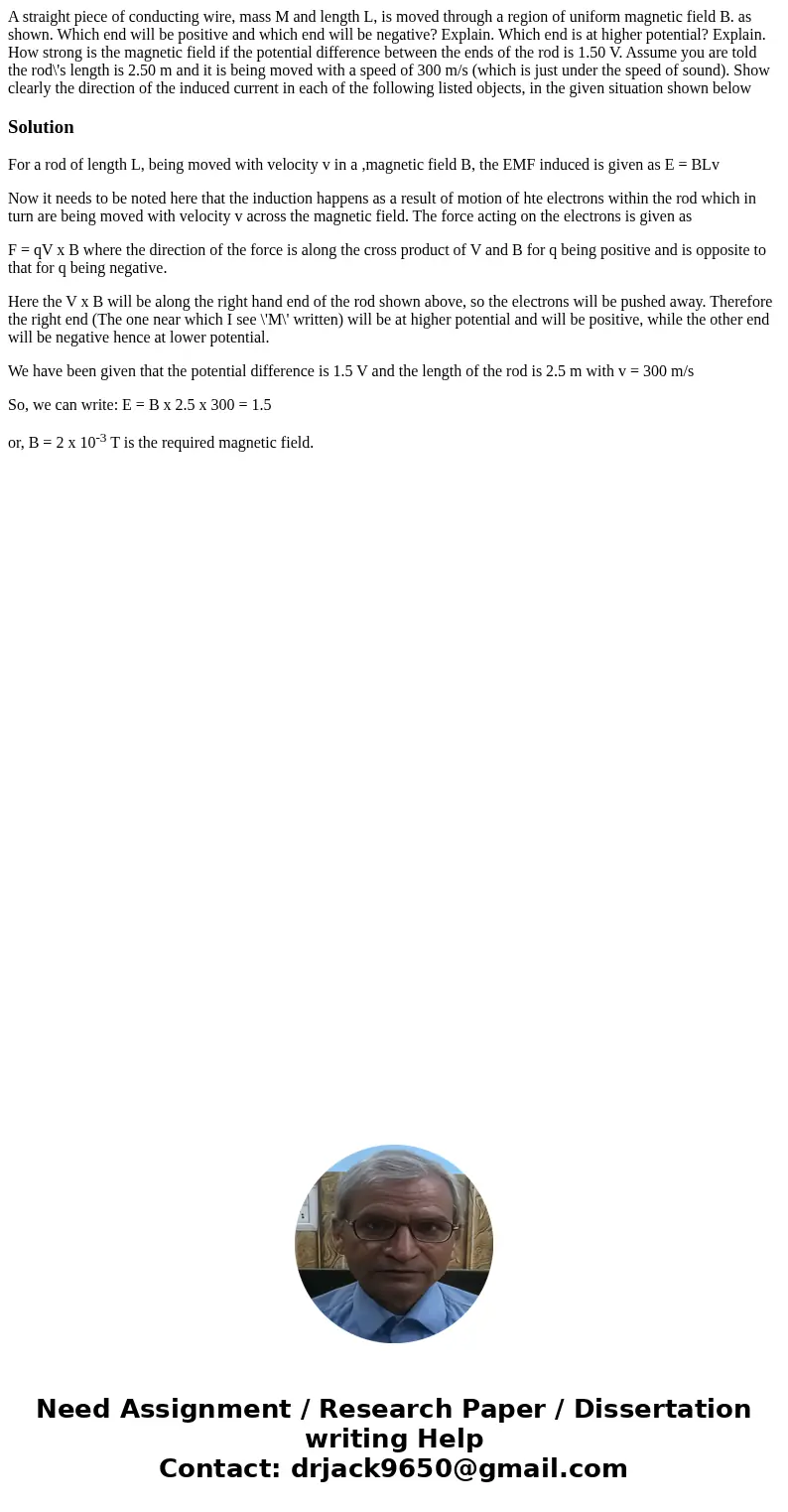A straight piece of conducting wire mass M and length L is m
Solution
For a rod of length L, being moved with velocity v in a ,magnetic field B, the EMF induced is given as E = BLv
Now it needs to be noted here that the induction happens as a result of motion of hte electrons within the rod which in turn are being moved with velocity v across the magnetic field. The force acting on the electrons is given as
F = qV x B where the direction of the force is along the cross product of V and B for q being positive and is opposite to that for q being negative.
Here the V x B will be along the right hand end of the rod shown above, so the electrons will be pushed away. Therefore the right end (The one near which I see \'M\' written) will be at higher potential and will be positive, while the other end will be negative hence at lower potential.
We have been given that the potential difference is 1.5 V and the length of the rod is 2.5 m with v = 300 m/s
So, we can write: E = B x 2.5 x 300 = 1.5
or, B = 2 x 10-3 T is the required magnetic field.

 Homework Sourse
Homework Sourse